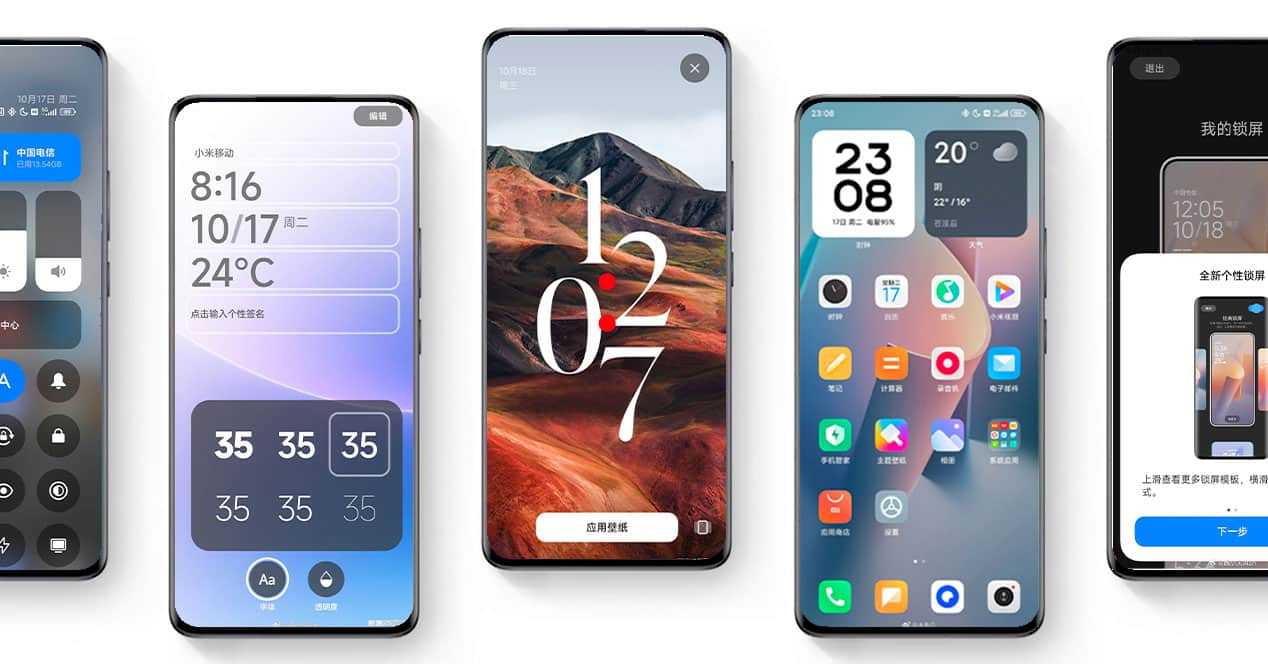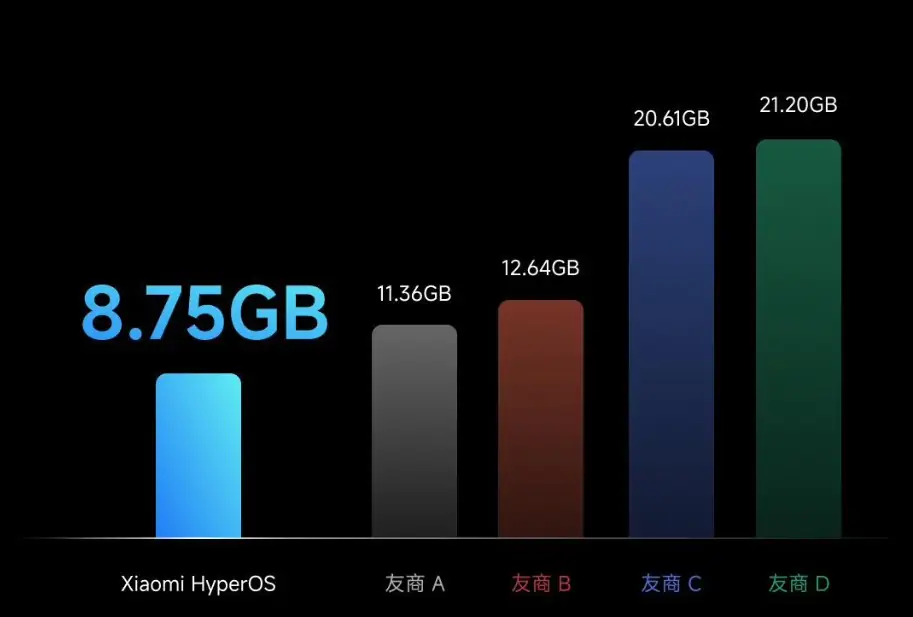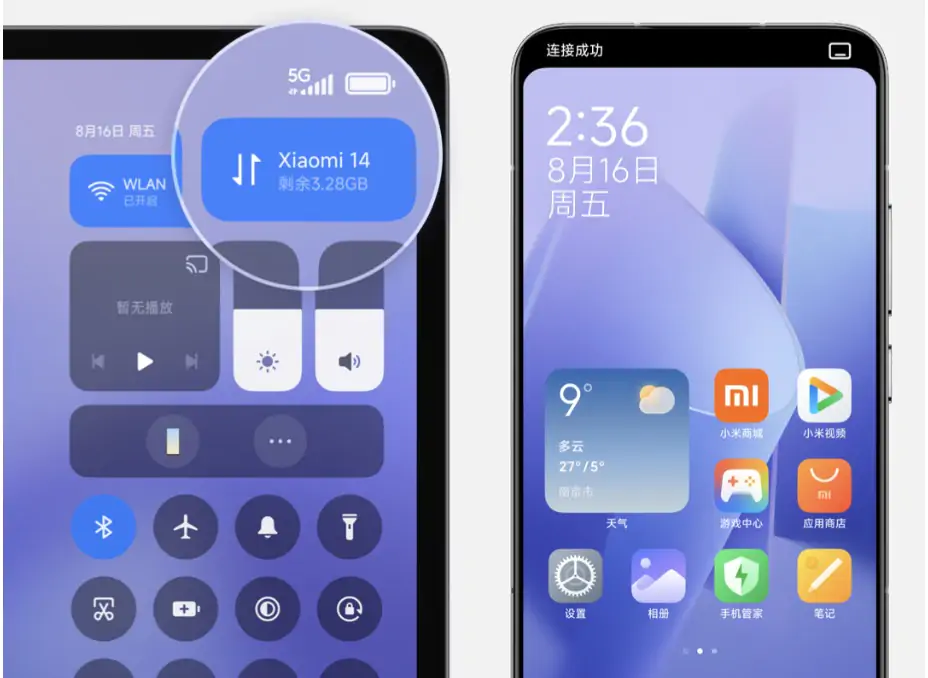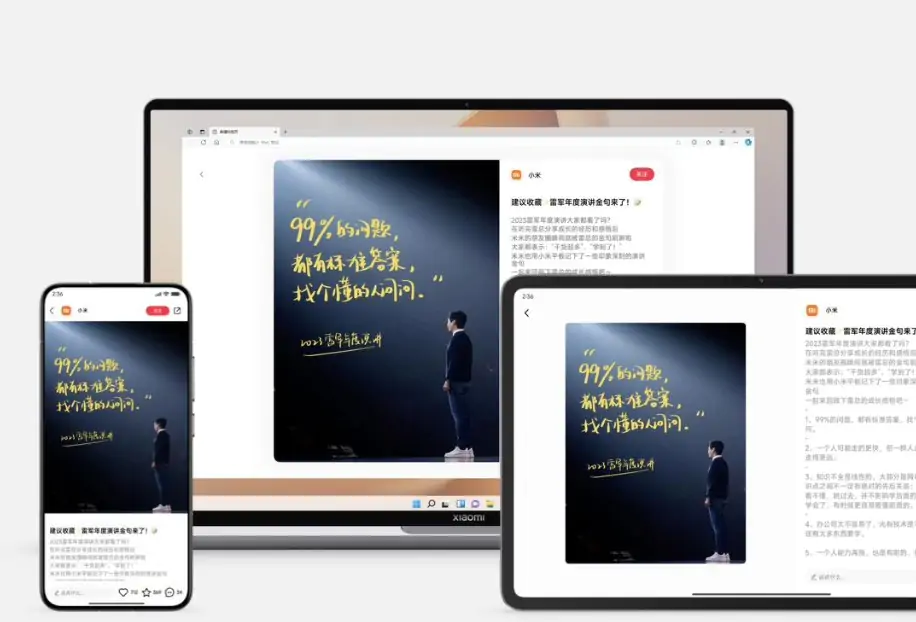Xiaomi has announced its new operating system, Xiaomi HyperOS, capable of giving new life to the intelligent ecosystem
During the event “Leap Beyond the Moment“, Xiaomi announced its new operating system, Xiaomi HyperOS, capable of giving new life to the intelligent ecosystem composed of personal devices, cars and home products. Aiming at four main objectives, which include low-level refactoring, cross-end intelligent connectivity, proactive intelligence and end-to-end security, Xiaomi HyperOS promises a completely renewed user experience.
The new operating system will currently be pre-installed on new devices Xiaomi 14 SeriesXiaomi Watch S3, Xiaomi TV S Pro 85″ MiniLED and others, available in the Chinese market.

Xiaomi HyperOS: fully exploit the potential of devices
Xiaomi has achieved remarkable growth over the last 13 years, going from just 100 to as many as 1.175 billion users worldwide, with a product catalog that now covers over 200 categories. In the era of the Internet of Things, Xiaomi has faced the unique challenge of navigating the complexities arising from the multitude of device operating systems and interoperability challenges between various ecosystems. This experience pushed the company to innovate beyond all expectations, thus giving birth to Xiaomi HyperOS.
In phase of development since 2017, Xiaomi HyperOS was designed to introduce a new level of coherence to the IoT landscape, fulfilling the mission of unifying all devices in the ecosystem into a single integrated system framework. The final goal is to maximize the performance of each device, guarantee a uniform user experience and allow perfect connectivity between all Xiaomi devices.
Xiaomi HyperOS is founded on Linux and on the Xiaomi Vela system, developed by Xiaomi itself. Its exceptional compatibility and precise system resource management capabilities allow every device to deliver optimal performance. The layer Xiaomi HyperOS supports over 200 processor platforms and over 20 standard file systems, covering hundreds of device types and thousands of SKUs.
Flexibility
Enables flexible configuration, operation and deployment based on hardware requirements, with a range of compatible device RAM sizes ranging da 64KB a 24GB. Following the principle of configuring only the necessary resources based on hardware changes, together with file deduplication and compression of the underlying IO stack, Xiaomi HyperOS is lightweight by its very nature: the system firmware on smartphones takes up only 8.75GBwhich is a significant improvement over the competition.
Xiaomi HyperOS is equipped with sophisticated planning capabilities capable of accurately managing the hardware and orchestrating different activities in diverse and complex scenarios. This is possible through technical means such as dynamic thread priority adjustment and dynamic task cycle evaluation, which enable optimal performance while maintaining energy efficiency. Running resource-intensive games on a smartphone equipped with Xiaomi HyperOS allows you to achieve a more stable frame rate and lower power consumption than stock Android and other heavily customized operating systems.
On devices with a power of limited processing, the scheduling advantages of Xiaomi HyperOS are even more obvious; supports splitting tasks across multiple processing units for cooperative processing, which maximizes hardware performance. Furthermore, Xiaomi HyperOS has undergone extensive restructuring of technical modules, including the file system, memory management, imaging subsystem and networking system, with the aim of efficiently exploiting and optimizing different hardware capabilities of various devices, thus providing optimal performance.

Intelligent cross-end connectivity – HyperConnect takes connectivity to the next level
In addition to pursuing excellence in single-end performance, Xiaomi HyperOS breaks down the limits of conventional system architectures. At its core is an innovative cross-end intelligent connectivity framework, HyperConnect, which facilitates real-time networking between myriad devices. With the introduction of the integrated device center, users can now actively control almost their entire range of connected devices, effortlessly monitoring and managing their interconnected ecosystem from anywhere, whether at home, on the road or in the office. Thus one opens new era of convenience and efficiency for users, who will be able to identify and manage all the devices in their Xiaomi ecosystem even more fluidly.
Xiaomi HyperOS harmonizes all connected devices, allowing the software to adapt to the user’s needs. You can seamlessly switch camera sources during video conferences, access car cameras from your phone, access the rear camera of your smartphone while using a tablet or laptop, and even connect your tablet to the Internet via your smartphone. Additionally, apps, clipboard contents and notifications can be seamlessly transferred between devices, depending on the user’s needs.

Xiaomi HyperOS: devices are able to understand user intentions
In the era ofInternet of Things, connectivity and integration of functionality between devices is essential; Xiaomi HyperOS goes a step further by incorporating an AI subsystem that supports advanced AI technologies, allowing devices to proactively assist users.
HyperMind is the cognitive center of the Xiaomi device ecosystem, bringing cutting-edge connections between devices in the era of “proactive intelligence”. This allows devices to proactively understand user needs and act accordingly. HyperMind uses the four perceptual capabilities of devices – environment, vision, sound and behavior – to learn user needs and automatically adapt devices to their needs. For example, if a user always turns on the living room light after unlocking the smart door lock, HyperMind will automatically light the room after learning this pattern and asking for user consent. This innovation simplifies complex connectivity between devices and reduces the cost of traditional machine learning, allowing users to enjoy the convenience of device connectivity without having to understand intricate logic understanding or activation mechanisms.
I.A.
Xiaomi HyperOS uses large base models, allowing them to power system applications. Xiaomi AI Assistant now allows direct access to the text generation capabilities of the base models via its user interface, making tasks such as speech generation and summary of articles. The real-time captioning feature has been improved to transcribe video conference conversations into intelligent meeting notes and summaries. Furthermore, users can use voice phrases to search for images in their photo albums and create AI images based on existing portraits; the tablet version of the “Mi Canvas” app has been equipped with an AI brush capable of transforming random doodles into refined works of art; Furthermore, third-party applications can exploit the potential of the AI subsystemsuch as understanding documents through WPS screens or generating presentations with a single command.
To efficiently implement thelarge foundation models‘, Xiaomi HyperOS leverages its AI subsystem to integrate them into the device’s NPU. This support extends to the large foundation models developed by Xiaomi on smartphones, such as the imaging foundation model, which reduced model size and memory usage by 75% and decreased the drawing time from 100 seconds to just 5 seconds1. These improved image generation capabilities are already powering features like “Text to Image” e “Image Extender” of Xiaomi’s AI assistant in the device’s photo albums.

End-to-End Security: Safeguard users in every scenario
For Xiaomi, user privacy and security are the cornerstone of every user experience, with a continuous commitment to continually improve this area. The TEE developed by Xiaomi is the basis of our security subsystem. Operating on dedicated hardware, this isolated security operating system is purpose-built to safeguard sensitive information, covering a wide range of security features for smartphones and AIoT devices, such as biometrics, passwords and screen lock.
Xiaomi HyperOS places fundamental attention on security, extending its protective umbrella not only to individual devices but also to interconnected security modules. This interconnected TEE based on security modules ensures mutual trust between devices in the network. To further protect the entire network, Xiaomi HyperOS employs the crittografia end-to-end through the TEE for data transmission between devices.

Xiaomi HyperOS: co-building and sharing intelligent ecology
HyperOS adheres to the principle of open source, actively nurturing an open software ecosystem, and welcomes partners to join Xiaomi in shaping an intelligent ecosystem and jointly providing better user experience.
Xiaomi is therefore proud to announce the open-sourcing of Xiaomi Vela, an IoT software platform designed for consumer IoT products. This platform, developed independently by Xiaomi, is based on the open-source NuttX real-time operating system. Xiaomi Candle provides a uniform software platform for different IoT hardware, simplifying development by abstracting underlying hardware differences and offering a unified software interface for higher-level developers. This approach unifies different application scenarios, streamlines development and improves efficiency. By making Xiaomi Vela open-source for IoT device manufacturers and developers, Xiaomi promotes the innovation of IoT devices, improving their performance and enabling real-time connectivity capability across a broad spectrum of devices.
Xiaomi HyperOS is a human experience-focused operating system designed and built to connect personal devices, automobiles and smart home products into a smart ecosystem. The system marks a fundamental step forward in Xiaomi’s strategic vision of realizing the intelligent ecosystem.”Human x Car x Home“. The new Xiaomi 14 Series will be equipped with Xiaomi HyperOS pre-installed, together with …















Leave a Reply
View Comments